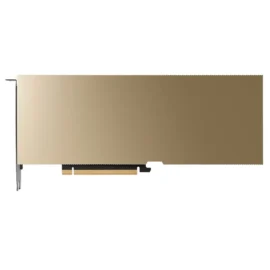NVIDIA GPUs have become indispensable components for modern servers, powering a wide range of applications from artificial intelligence (AI) and machine learning (ML) to high-performance computing (HPC) and data analytics. Their exceptional parallel processing capabilities and advanced features make them the go-to choice for enterprises seeking to boost their computational power. This article explores the advantages of using NVIDIA GPUs in servers, key models available, and their applications across industries.
Why Use NVIDIA GPUs in Servers?
- Unmatched Performance: NVIDIA GPUs excel in parallel processing, handling thousands of simultaneous threads. This makes them ideal for AI training, deep learning, and scientific simulations.
- Energy Efficiency: Compared to CPU-only solutions, GPUs offer higher performance per watt, reducing the energy footprint of data centers.
- Versatile Ecosystem: NVIDIA’s CUDA platform and software libraries, such as cuDNN and TensorRT, provide robust support for developers to accelerate a variety of workloads.
- Scalability: With support for multi-GPU setups and NVLink technology, NVIDIA GPUs enable scalable solutions for large-scale computational tasks.
Popular NVIDIA GPUs for Servers
1. NVIDIA H100 Tensor Core GPU
- Overview: Built on the Hopper architecture, the H100 offers state-of-the-art performance for AI and HPC workloads.
- Key Features:
- Transformer engine for AI model optimization.
- 80GB HBM3 memory for massive data throughput.
- NVLink for high-speed GPU interconnects.
2. NVIDIA A100 Tensor Core GPU
- Overview: Designed for diverse workloads, the A100 is a versatile GPU based on the Ampere architecture.
- Key Features:
- Multi-instance GPU (MIG) technology for partitioning GPU resources.
- 19.5 teraflops of FP32 performance.
- Ideal for AI training, inference, and data analytics.
3. NVIDIA V100 Tensor Core GPU
- Overview: A widely adopted solution for data centers, the V100 delivers robust performance for ML and HPC tasks.
- Key Features:
- Volta architecture with Tensor Cores.
- 32GB HBM2 memory.
- Exceptional efficiency in deep learning training.
4. NVIDIA T4 GPU
- Overview: A cost-effective solution for inference and cloud workloads.
- Key Features:
- Turing architecture with RT cores for real-time ray tracing.
- Low power consumption (70W).
- Versatile support for AI, video transcoding, and VDI.
Applications of NVIDIA GPUs in Servers
- Artificial Intelligence and Machine Learning: NVIDIA GPUs accelerate AI training and inference, enabling breakthroughs in natural language processing, image recognition, and recommendation systems.
- High-Performance Computing: Industries like weather forecasting, genomics, and fluid dynamics leverage GPUs for their computational needs.
- Cloud Computing: Cloud providers integrate NVIDIA GPUs to offer scalable computing instances for AI, gaming, and professional visualization.
- Data Analytics: GPUs speed up big data processing tasks, empowering real-time insights and decision-making.
- Rendering and Visualization: From 3D rendering to video editing, NVIDIA GPUs provide exceptional performance for creative professionals and enterprises.
Choosing the Right NVIDIA GPU for Your Server
When selecting an NVIDIA GPU for your server, consider the following factors:
- Workload Requirements: Match the GPU’s capabilities to your application’s computational needs.
- Budget: NVIDIA offers GPUs across various price points, allowing flexibility based on financial constraints.
- Scalability: Opt for GPUs with NVLink or MIG features for future-proof scalability.
- Energy Efficiency: Ensure the GPU aligns with your data center’s power and cooling capacities.
Conclusion
NVIDIA GPUs are redefining the performance and capabilities of servers across industries. With a rich lineup of GPUs like the H100, A100, and V100, NVIDIA continues to lead the market in providing solutions tailored for demanding workloads. By integrating these GPUs into servers, organizations can achieve unprecedented efficiency, scalability, and computational power to stay ahead in an increasingly data-driven world.






